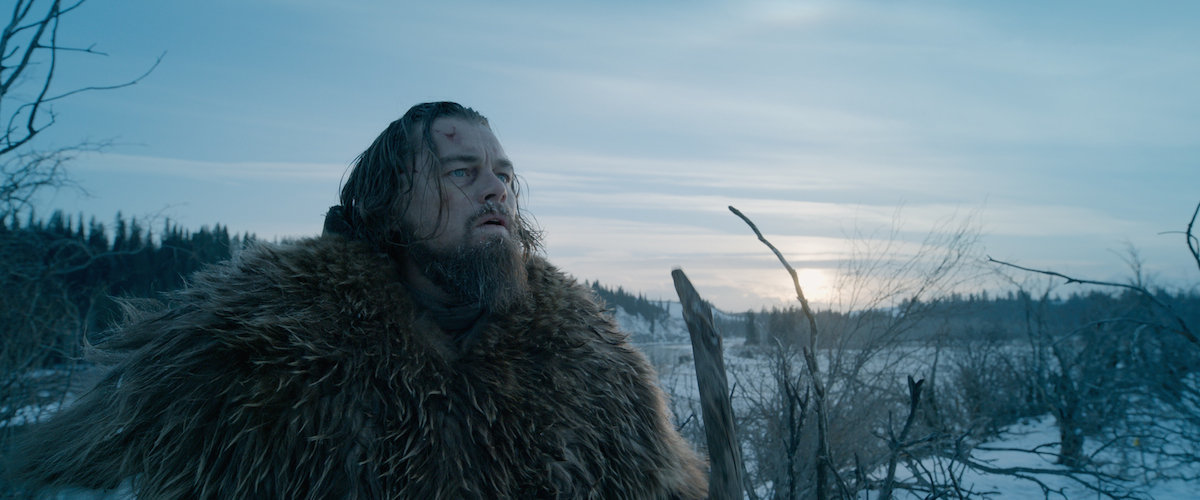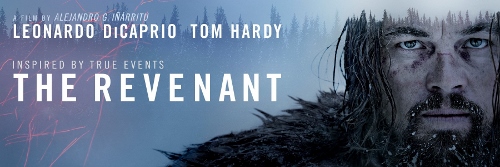The legend of American frontiersman and fur trapper Hugh Glass, who was left for dead after being mauled by a bear in the early 1820s, inspired Richard C Sarafian’s 1971 film Man in the Wilderness, in which Richard Harris starred as “Zachary Bass”. Free sketchup rendering extension. Now it returns to the screen in a film based in part on Michael Punke’s 2002 book The Revenant: A Novel of Revenge.
Revenant is meaningless pain porn Carole Cadwalladr
Roger Ebert on James Ivory's 'Howards End'. Ballad of Narayama 'The Ballad of Narayama' is a Japanese film of great beauty and elegant artifice, telling a story of startling cruelty. The Revenant review – a walk on the wild side. This is muscular film-making, and much has been made of the punishing physicality of the “living hell” shoot in Canada and Argentina, with a digital grizzly bear one of the few obvious concessions to artificiality. The Revenant is a 2015 American semi-biographical epic western film directed by Alejandro. The film received largely positive reviews, and praise for its performances (particularly from DiCaprio and Hardy), direction, and cinematography.
Leonardo DiCaprio delivers a barnstorming performance as the embattled Glass, whose quest for survival takes him on a Herzogian odyssey to the very borders of life and death. Having previously been Oscar-nominated for What’s Eating Gilbert Grape, The Aviator, Blood Diamond and most recently The Wolf of Wall Street, it’s clearly DiCaprio’s turn to triumph with a performance which relies more upon physicality than the spoken word. Academy voters like to see their actors suffer, and there’s a tangible mondo tinge to scenes of Leo plunging into icy waters, being buried alive, chomping down on raw bison liver, and crawling into a still-warm animal carcass to sleep. Meanwhile, the freezing temperatures of the breathtaking environment (all filmed in natural light) seem to seep into his very bones; by comparison The Hateful Eight looks like a summer holiday.

Having swept to Oscar victory with the faux one-shot gimmickry of Birdman, director Alejandro González Iñárritu once again hitches his wagon to the technical brilliance of cinematographer Emmanuel Lubezki, working wonders with his digital Arri Alexa cameras. Via Lubezki’s sweeping widescreen lenses we find ourselves viscerally dragged through the wilderness, violent ambushes and life-threatening confrontations caught in superbly orchestrated lengthy takes, the camera following on foot, on horseback, through woods and plains, air and water, often without apparent edits. This is muscular film-making, and much has been made of the punishing physicality of the “living hell” shoot in Canada and Argentina, with a digital grizzly bear one of the few obvious concessions to artificiality.
There is hokey spirituality too, as Glass’s traumatised mind drifts back to the Native American mother of his Pawnee-speaking son, Hawk (Forrest Goodluck), offering life lessons from beyond the grave. The stalwart supporting cast is headed up by a partially scalped Tom Hardy who chews the rugged scenery with spittle-flecked gusto as the wretched John Fitzgerald, while Domhnall Gleeson is spot on as the strait-laced Captain Andrew Henry. Hats off, however, to Will Poulter who all but steals the show from his more heavyweight co-stars as the naive and increasingly embattled Jim Bridger. A chameleonic presence, Poulter is shaping up as one of the UK’s most versatile screen actors, a man for all seasons whose achievements deserve to be trumpeted a little louder.
A Play of Light and Shadow: Horror in Silent Cinema
Introduction to the Review Series
Any devotee of horror movies will eventually crawl their way to the classics. A small number will tread through the Universal era of Bela Lugosi and Boris Karloff, finding endearment in their depictions of Dracula and Frankenstein’s monster. Fewer still will explore further back to the silent era, and those that do generally only watch a meager selection of films, notably The Cabinet of Dr. Caligari(1920) and Nosferatu (1922). Most conversations about silent horror cinema begin with these films, yet there are over twenty years of macabre movies that precede them, including feature length offerings beginning in 1913.


For eighteen years these silent feature films laid the foundation of horror before audiences would actually be able to hear Lugosi in his signature voice utter the lines, “There are far worse things awaiting man than death.” It took filmmakers of the 1930s several years to adjust to the advent of talkies, and in many ways some of the films which preceded them were more ambitious and better crafted. This is mainly because silent filmmakers didn’t need to worry about lugging around heavy sound recording equipment or concern themselves with the noises of the sets. They were artists who could focus purely on their visual aesthetic and tell rich tales of nightmares projected upon screen canvases, their only paints being light and shadow.
In this series of reviews I will dedicate myself to watching every feature length silent horror film I can access from 1913’s The Student of Prague to the dawn of the talkies. Where I am able to I will examine the people who made these films and the part they played in horror movie history, the techniques and focuses of the films and their impact, what these stories meant to contemporary audiences, and what, if anything, these films have to offer a modern audience. On this last point a note should be made about my grading system, which is of course subjective: I am someone who enjoys silent films and I assume the audience for my reviews does so as well. Silent films require more attention from viewers. Often scenes are left to interpretation and the person watching must fill in elements of the narrative with their own logic and imagination. Anyone new to watching movies of this era should be aware that it is hardly a passive experience, though it is, in my opinion, a rewarding one.
I hope that readers will find these reviews helpful, whether in pointing them to unknown selections, finding renewed passion for the movies they already love, or in offering reasons to respect and appreciate the movies of this era, all of which we are extremely fortunate to still be able to enjoy after a century.
Reviews can be found on the site’s pages for 1910-1919 and 1920-1929.